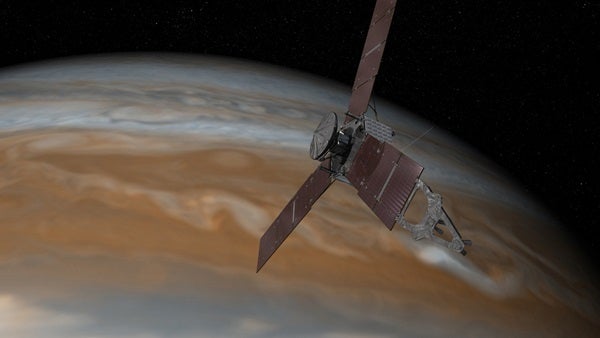The craft successfully restarted, but wary software engineers shut the instruments down while they ran diagnostics. With all instruments off, the planned data collection that was supposed to come from the Jupiter flyby did not happen.
According to Juno Project Manager from NASA’s Jet Propulsion Laboratory Rick Nybakken, Juno was “still quite a ways from the planet’s more intense radiation belts and magnetic fields.”
The Juno spacecraft was launched in August of 2011 and arrived at Jupiter in July 2016. The craft is making a series of maneuvers by Jupiter, coming as close as 2,600 miles (4,100 kilometers) above the cloud surface during its mission of exploration. Juno is studying the aurorae of Jupiter and hopefully learn more about its origins, structure, atmosphere and magnetosphere.
The Juno science team is still analyzing data from the first close flyby in August 2016. The next close flyby is scheduled for December 11, 2016, where the team will create a second burn to decrease the apojove of the craft and bring it closer to the planet on farthest approach.










